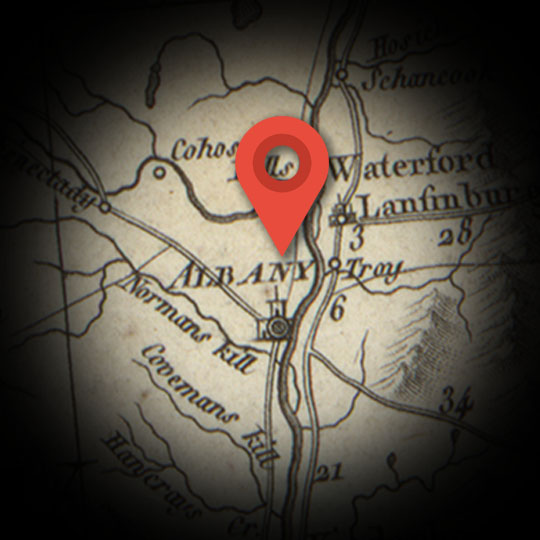ALBANY
Explore
Founded by Dutch fur-traders about 1614, New York State’s capital city of Albany is a location where Alexander Hamilton spent ample time, and had many reasons for isiting, throughout his life.
His first visit was in the capacity as George Washington’s aide-de-camp in 1777, when Hamilton was sent here on a mission to persuade General Horatio Gates to send Washington’s command reinforcements.
In addition to the many milestones Hamilton experienced while living with and visiting his in-laws, the Schuylers, at their nearby mansion, Hamilton was a working professional in Albany. Both he and Aaron Burr kept offices here while practicing law as the American Revolution was winding down, and they were no longer soldiers in uniform.
Years later—as a far more seasoned and in-demand lawyer—the law practice would repeatedly draw Hamilton back to Albany. For instance, the New York Supreme Court was sitting in Albany from October 19-30, 1802. Hamilton had business before the court, and it required a three-day trip to commute between the two cities. Travel then typically was by sloop, which were at the mercy of tidal inflows to the Hudson River and would often have to tie up and wait for hours or days before proceding. At the end of this particluar Albany trip, Hamilton recorded leaving a watch behind at a watchmaker’s to be fixed. Hurrying out of town, he forgot it, and had to write politician friend John V. Henry to help him retrieve it.
Albany had much to do with the beginning of Alexander Hamilton as a lawyer, politician, and family man. The city could be said to have witnessed the beginning of the end for him, as well.
It was during an 1804 dinner at businessman and future state Governor John Tayler’s home that Hamilton reportedly made remarks opining that Aaron Burr was a “dangerous man,” one who “ought not to be trusted.”
This exchange—eventually reported in newspapers—made its way to Aaron Burr and set in motion the chain of events leading to their fatal duel in Weehawken, New Jersey, on July 11th of that year.

TIME FRAME:
1777-1804
